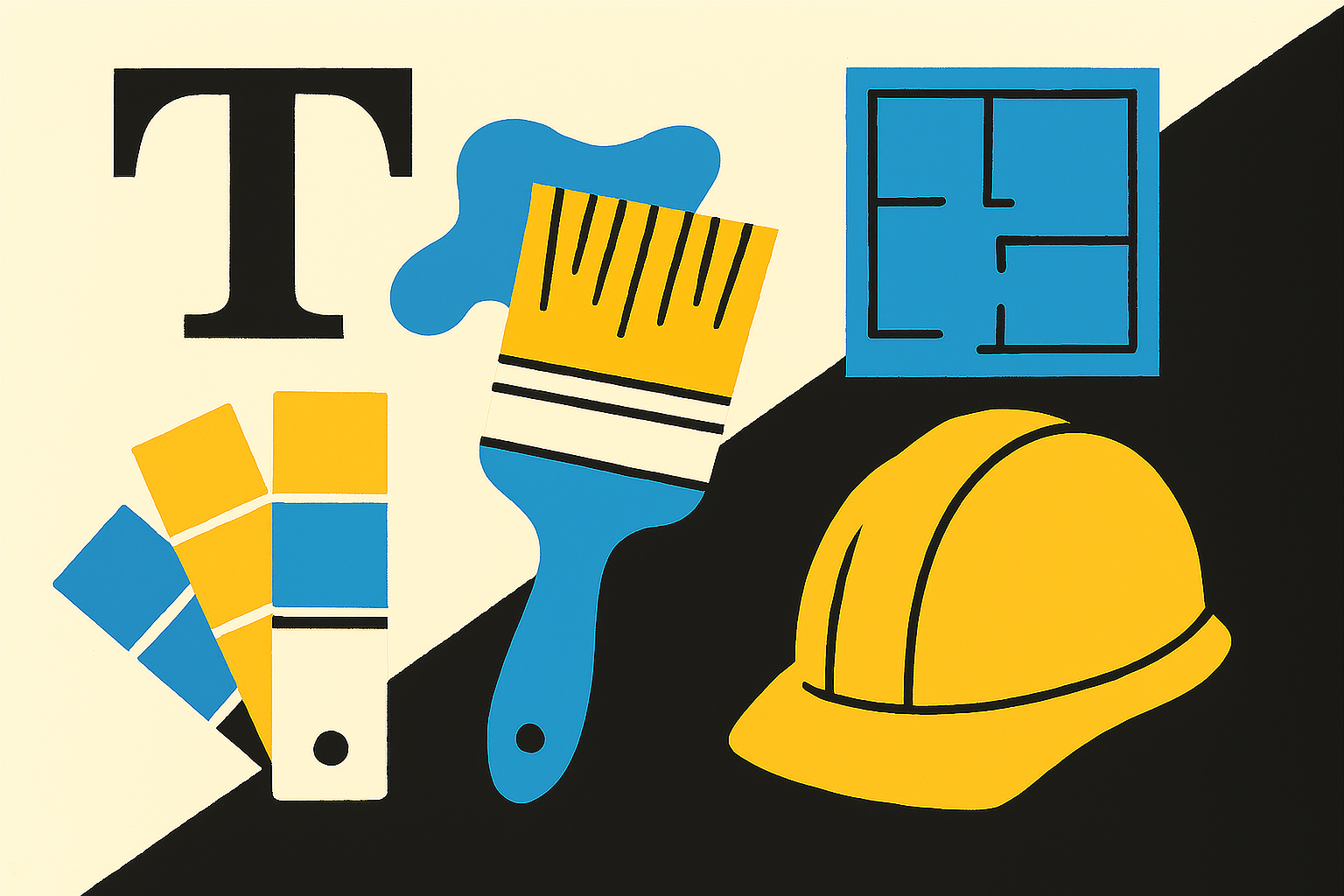Refresh or Redesign? How to Tell What Your Website Really Needs
When your website isn’t working as well as it should (maybe it feels clunky, outdated, or just off-brand) the question becomes: Do you need to start from scratch, or can you make targeted improvements? The answer depends on your goals, the site’s current state, and how your business has evolved.
This post breaks down the difference between a website refresh and a full redesign and offers guidance on how to decide what your website really needs.
What’s the Difference Between a Website Refresh and a Redesign?
Think of a refresh like repainting a room, swapping out the furniture, and updating the lighting—it’s still the same space, but it feels more current, intentional, and functional.
A redesign, on the other hand, is a full renovation. You’re tearing down walls, moving plumbing, and rethinking the entire structure to better meet your needs.
Refreshes typically involve:
Updating visual styles (fonts, colors, image choices)
Rewriting or tightening up content
Adding new projects, testimonials, or pages
Streamlining navigation or page layout
Improving mobile responsiveness
Redesigns usually include:
Reworking the site architecture or structure
Switching platforms or CMS (e.g., moving from WordPress to Squarespace)
Creating a new brand identity or significantly updating the visuals
Starting over with content and messaging
Adding or removing major functionality (like e-commerce or a client portal)
Signs You Need a Refresh
Your brand is still solid, but the site feels dated
You’ve added new services or content that doesn’t quite fit
You’re getting fewer inquiries or conversions than expected
The design no longer reflects your personality or professionalism
You want to make incremental changes without a big investment
Signs You Might Need a Redesign
You’ve rebranded, pivoted, or significantly changed your services
The site is hard to navigate or doesn’t guide users effectively
The platform is outdated or hard to maintain
You feel embarrassed to send people there
You’ve outgrown your current content and need a total rethink
A Strategic Approach to Each
For a Refresh: Start by identifying what’s working and what’s not. Review your site through the lens of your current ideal client. What questions do they have? What do they need to feel confident in hiring you? Focus on:
Clarifying messaging
Adding fresh testimonials, case studies or portfolio pieces
Updating the homepage to reflect your priorities
Cleaning up layout and mobile responsiveness
Here’s how I approach a website refresh for a client: First, we meet to evaluate what’s working, what’s not, and where the opportunities lie. I then put together a proposal that outlines a phased approach—often starting with the homepage or top-performing pages. While the site remains live, I rework one page at a time, improving design, layout, copy, and structure as we go. This allows for a smooth, low-disruption process that moves at the client's pace and adapts as their goals evolve.
For a Redesign: Step back and assess your business goals. A full redesign gives you the chance to reposition your business, improve SEO, and rebuild trust with the right audience. It’s often worth the investment if you’re relaunching your brand, targeting a new market, or scaling up.
Work with a designer who understands not just visual design, but UX and messaging strategy. That’s what I focus on at Twill Creative—making sure the entire site is aligned with where your business is going, not just where it’s been. My redesign process begins with a deep dive into your business goals, your users’ needs, and your competitive landscape. I use this insight to shape a content strategy that’s not only aligned with your brand but also designed to grow with you as your business evolves.
Refresh Example: My Own Website
Earlier this year, I gave my own site a strategic refresh. I didn’t start over—I updated the homepage layout, rewrote key messaging on existing pages, added new work samples, refined the typography, and launched a blog. These changes helped the site feel more aligned with my current services (like Rapid Website sprints) and more appealing to the kinds of clients I want to work with now.
By approaching it incrementally, I was able to stay visible, keep content live, and evolve the design without disappearing for weeks.
Redesign Examples
I have worked with numerous clients requiring a complete redesign of their existing websites, often incorporating their established branding. I always enjoy enhancing an existing brand by adding depth and versatility to its visual language. Below are a few before-and-after examples:
Takeaways
A website refresh is perfect for making strategic updates without overhauling everything.
A full redesign is worth it when your brand or business goals have changed significantly.
If you’re not sure which you need, look at the user journey on your site—where are people dropping off? What feels misaligned? What’s missing?
At Twill Creative, I help small firms and solo professionals clarify what they really need from their website—then deliver that with clarity and momentum. If your site feels off but you’re not sure how to fix it, reach out for a consult. We’ll figure out whether a refresh or redesign makes the most sense for your goals.











